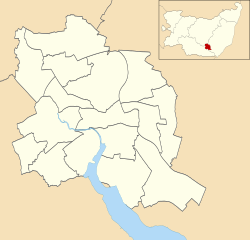| St Helen's Church, Ipswich | |
|---|---|
 St Helen's Church, 2018 | |
| 52°03′22″N1°09′54″E / 52.056°N 1.165°E | |
| Location | Ipswich, Suffolk |
| Country | England |
| Denomination | Anglican |
| History | |
| Founded | 11th century |
| Specifications | |
| Materials | Knapped flint rubble |
St Helen's Church, Ipswich is an Anglican church in Ipswich, Suffolk, England. The church is built from knapped flint rubble with additional stone and white brick dressings. Although some of the building dates back to the medieval period, the building was substantially altered in the nineteenth century. [1]

